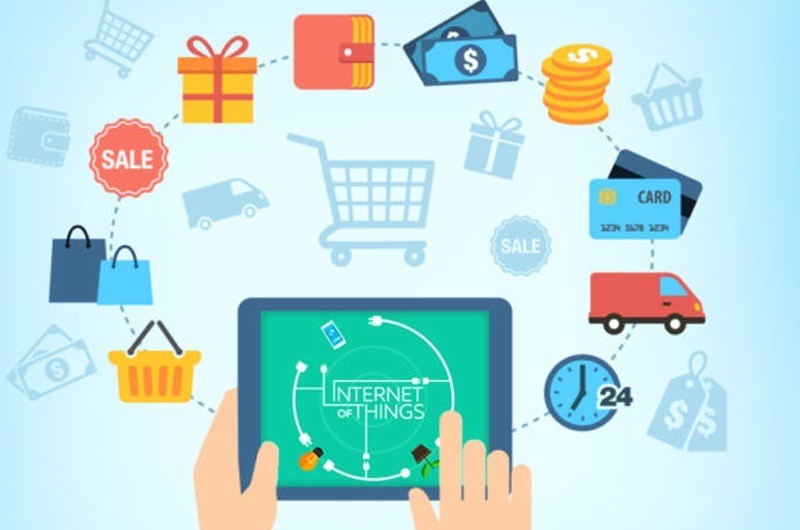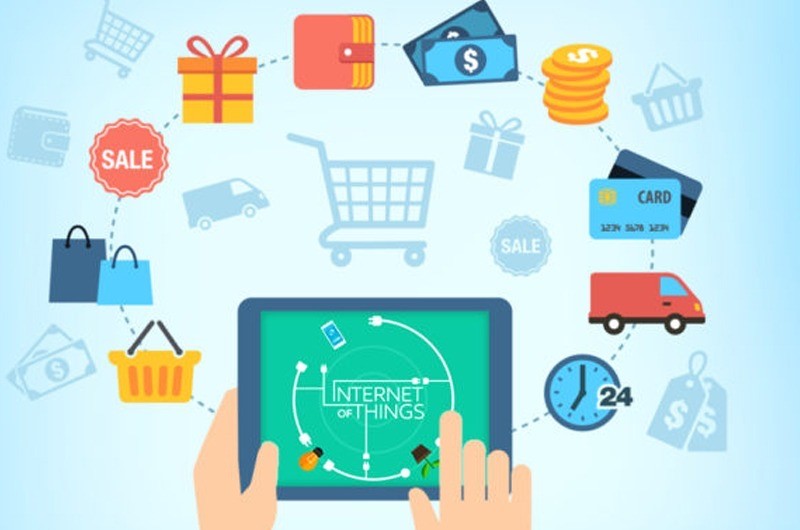With coronavirus drifting our working and living patterns, a bustling of online commerce trend can be presaged as the consumers prefer to stay indoors. E-commerce will undoubtedly be benefitted through the evolution, while the usage of tech solutions to conquer the human interactions makes the best of cases. Basket sizes may potentially go up, eventually leading to the phase of stockpiling the essentials before the curve drowning down again either due to stock conditions or demand and supply economics, thus leading to a strain on the supply chain and potentially create a couple of new business models.
While tech innovation may create its space in the form of drone deliveries and VR/ AR equipment, the internet infrastructure may find the situation of it being tested to the limits, on the other hand. The sales of shelf stable food items like rice, preserved items, packed meat, powdered milk, biscuits, water, instant noodles, etc. are likely to be increased.
While the curve may tend to shift to the new normal in a hopefully bright tomorrow, the strain of lifestyle may be pushed to the culture, creating a permanent behavior change. The torch will then turn to the policy makers to uphold the economic curve and adapt the direction or the norms.
As reported by Reuters, the automotive industry (-44%), airlines (-42%) and energy and basic materials (-13%) have been hit hardest.
According to UNCTAD, “a preliminary downside scenario sees a $2 trillion shortfall in global income with a $220 billion hit to developing countries (excluding China).”
As reported by India Today, some of the top affected economies include European Union ($15.6 billion), the US ($5.8 billion), Japan ($5.2 billion), South Korea ($3.8 billion), Taiwan Province of China ($2.6 billion) and Vietnam ($2.3 billion).
Compared with the similar timeframe a year ago, an increase of 52% in the online sales and an 8.8% increase in the number of online shoppers since the beginning of coronavirus, Quantum Metric reported.
Earnings revisions and capital expenditures of the top 5000
Bloomreach also reported a similar increase for its 250 plus retailer clients, such as the grocery chain Albertsons Cos. While the businesses driven by offline model are beginning to shift to online, emergence of innovative business models can be observed in domains like healthcare, social media, logistics, ecommerce, IT products, content consumption and delivery, education, no-human-touch delivery, channel & buying preferences and the mode of delivery. While supply chains presented a massive challenge in combating against the irregular demands, online grocery sales went up by 215% Y-O-Y from the period of late January to early February, as reported by the Chinese online retailer JD.com and mentioned in Bain & Company’s article: Defending retail against the Coronavirus.
As reported by The Hindu BusinessLine, due to the said epidemic, India is one of the 15 most affected economies with an estimated trade impact of more than $129 million for the chemical sector, $64 million for textiles and apparel sector, $34 million for the automotive sector, $13 million for the leather products, $27 million for metals & metal products and $15 million for wood products and furniture.
– Flipkart, Amazon, BigBasket, and Grofers have witnessed about 20-30 per cent spike in orders.
– Orders have grown by 20-30% as compared to the last month (Vipul Parekh, co-founder of BigBasket)
– Increase in the purchase of 4G routers (by Snapdeal)
The three phases of response to the epidemic include:
Denial phase: The phase when the threat is considered negligible and or outside of the region of one’s network and is often termed as just another flu. The below tweet by Elon Musk was when the US was almost out of the situation of Coronavirus and when the number of cases in the country had a low count. Most of the countries are undergoing this phase. A primary signal for regions encompassing this phase will be for the grocery stores to get ready for the surge in demand.
Panic and precaution phase: The panic phase starts when a few cases start getting discovered in a country/ region and social media, then, starts playing a massive impact in perpetuating panic in the form of mass hysteria. Implementations of travel restrictions, declaration of it being a pandemic by the WHO, testing of international passengers with mandatory quarantining, etc. are some of the measures that indicate that a region or a country has entered the phase of precaution. Stock market is expected to take a large hit due to the sentiment of fear. According to Bain & Company, the US stock market has seen a decline of over 25% from its recent all-time highs, the fastest rate of decline since the 1920s. Hiring freeze can be evident as the demand and supply configuration of various sectors may be imbalanced.
In many areas, universities have either turned to online mode of education or have cancelled the in-person classes for some time. In response to the Coronavirus epidemic, Harvard moves its classes online as have asked the students not to return after the spring break, according to the Harvard Crimson. Other universities of the US canceling in-person classes and adopting virtual options include Stanford, Princeton, University of California- Berkeley & San Diego, Columbia, Hofstra, Ohio State, Seattle, University of Southern California, etc.
Source: TheCrimson.com
Evolution phase: The trend and patterns that a large set of population will accept during the epidemic may be set to retain into the lifestyles of many and may result into an evolved lifestyle that may include the following:
- More digital adoption in the form of increased internet usage, digital payments, digital governance, etc.
- Drone deliveries
- Online education
- Self-serving supermarket (like Amazon Go)
- Online dating (revenue of $65 million in 2020)
- Food delivery (expected market of $8 billion by 2022)
- OTT adoption (expected market of Rs 11,976 crore in 2023)
- Insurance policy adoptions
- AI and ML for supply chain
- SaaS product adoption + Cloud servers
- Web application innovation in design and experience
- Usage of hygiene or personal care products
- Online gaming (expected revenue of Rs 11,900 crore by 2023)
- Social networking
- VR/ AR adoption for remote support
Amid restrictions on gatherings, the epidemic will essentially force people to embrace digital technologies and applications, and therefore become more convinced of the need to migrate their operations to the cloud.
How can India benefit from the current shifts in demand and economic parameters?
Interventions by the Indian government in the following subjects, may help benefit the business amid Coronavirus:
Telemedicine and e-medical tourism: While an immediate intervention to boost the sector may help the current or upcoming demand of consultation with a doctor in India, the abundance may then be granted as an opportunity to open it worldwide and capitalize the expertise of Indian doctors. According to a report by IBEF, The Indian healthcare sector was expected to grow at a CAGR of 22% during 2016-2022 and reach $372 billion in 2022 from $ 110 billion in 2016. A McKinsey study estimates that telemedicine could replace half of in-person consultations in India, and lead to savings of $5 billion by 2025.
Drone licensing: Quick process of drone licensing may not only benefit the rise of sector of delivery via drones but also may invite Private Equity from around the world for the tech innovation. According to a report, FICCI and EY projected the value of the Indian UAV (Unmanned aerial vehicle) market to be around $885.7 million, while the global market size to go around $21.47 billion by the year 2021.
IT products: The supply chain analytics to cope up with the irregular curves of demand and supply may ask for an advanced IT algorithms and solutions in the form of products. Apart from that, IT products presented the solution for the case of remote working and online education.
Social commerce: With the rise in the usage of social media amid coronavirus along with the adoption of ecommerce, social commerce has already been reported as a $70 billion opportunity for India. With a steady growth of social media users globally, which is further expected to rise in the coming years coupled with the fact that 71% of consumers rely on social media for their buying decisions, while 78% of people get influenced by the social media posts of companies for their buying decisions.
Digital lending: The crunch of funds due to irregularities of the global order and the supply chain present the opportunity for pushing the funds via digital platforms, enabling different blue collar small investors to lend their money via peer-to-peer measures and to swiftly enable the penetration of funds into the economy. Digital Lending is a $1 trillion-dollar opportunity for India over the next five years according to The Boston Consulting Group. It is estimated that by the year 2023, the digital influence on retail lending could grow to reach 70-75 percent of consumers.
Digital payments: With paper currency being a carrier of microparticles, the adoption of digital mode of payments can be easily accepted via government channels of mass awareness and propagation of specific measures in the form of advisory.
Insurtech: While the fear of ensuring the right and orderly treatment from diseases without drilling one’s pocket makes the case for Insurance companies to make a swift action in the current scenario, technology intervention may further support the cause by deliberating an easy channel. Emergence of fully digital insurance companies can be noticed in the current scenario.
IT service delivery: The shift of offline to online platforms presents the case of effective delivery of huge bank of IT human resources and knowledge in the Indian subcontinent. According to a report by the consulting firm Zinnov, India will account for 41% of the digital engineering services market by the year 2025 and account for $10.6 billion of the digital engineering market share, which, on the other hand, is expected to grow 4 times in the next five years, as reported by LiveMint.
Gig economy and utilization of Indian IT professional services: With 15 million plus people working independently in various sectors such as IT, finance, sales and marketing, designing, animation, videography, content and academic writing and being the world’s largest freelance workforce after the US, coupled with comparatively lower hourly rates, India hosts a huge potential of its IT workforce, according to the Freelancer India survey report by Truelancer. According to the same report, online marketplaces source the highest jobs for the stated force of freelancers.
Disclaimer: The views expressed are of the author(s) and do not reflect the official policy or position of Diplomacy and Beyond Plus. The publication is not liable for the views expressed by authors.














